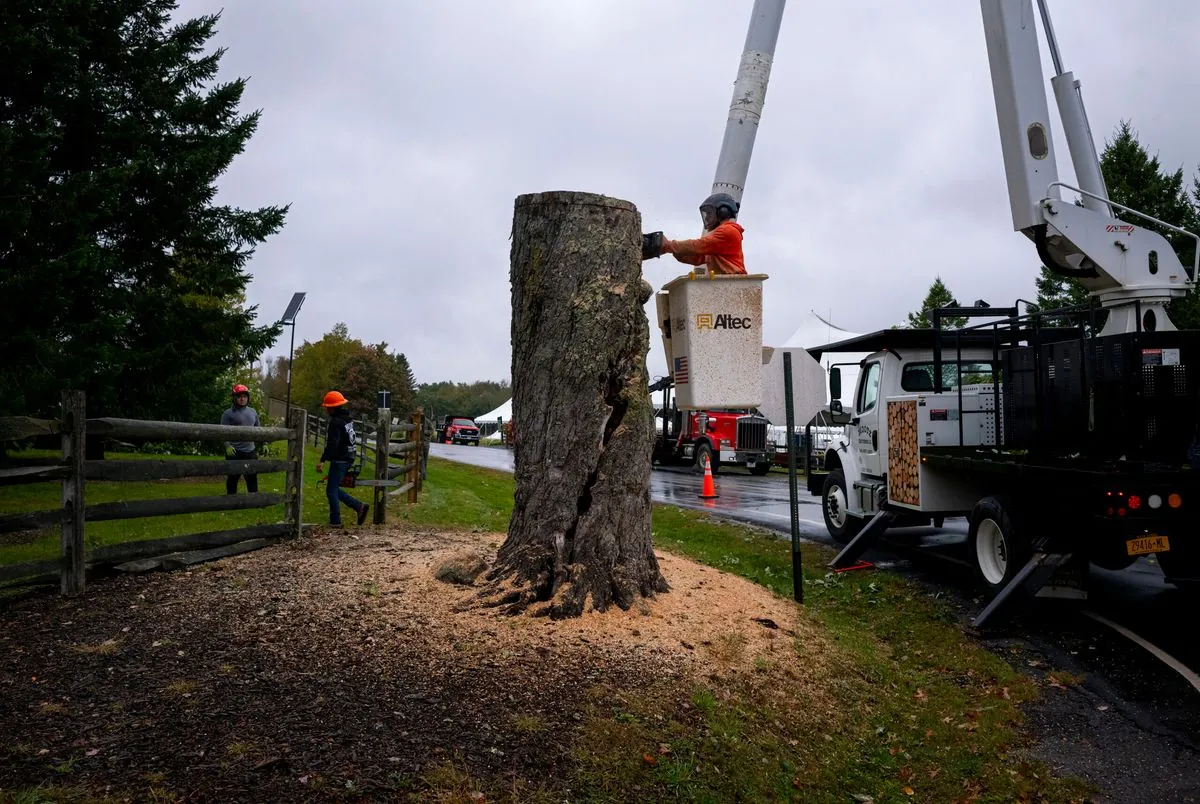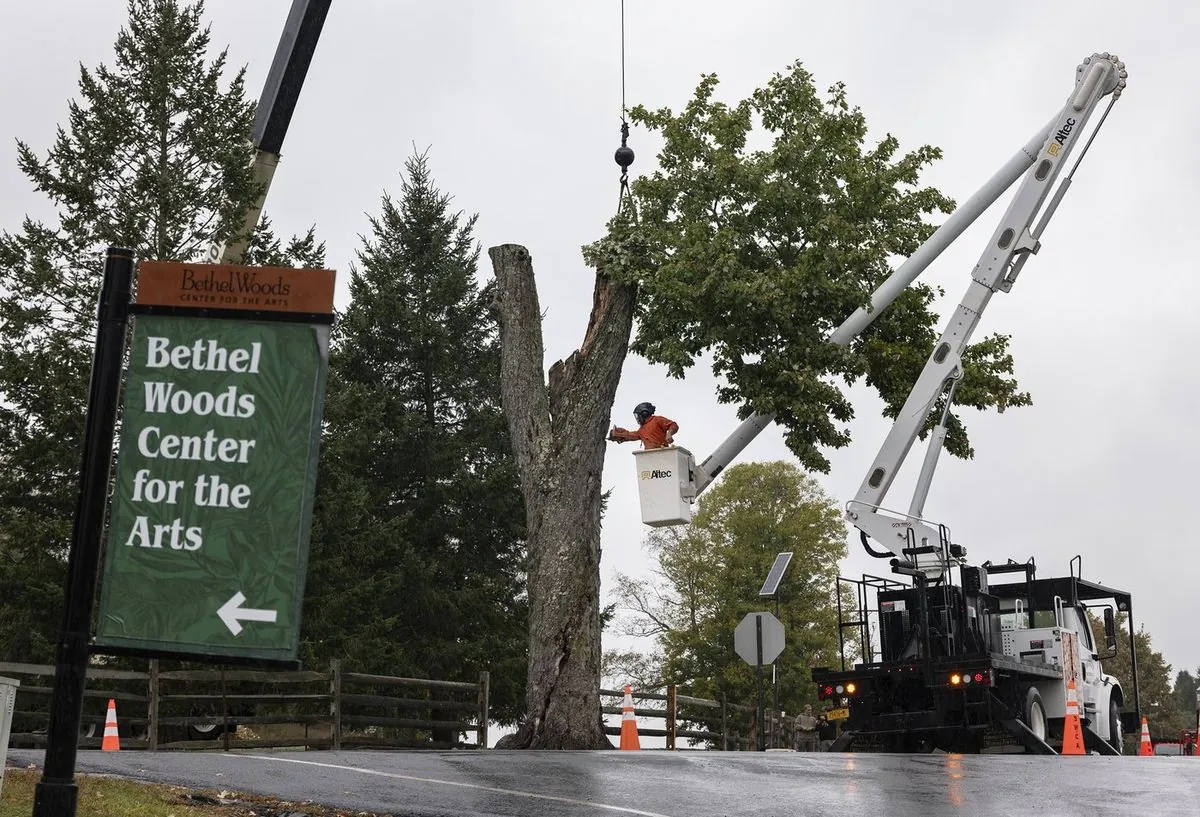Iconic Woodstock 'Message Tree' Felled After 55 Years
The historic Message Tree from Woodstock 1969 was cut down due to health concerns. Bethel Woods plans to honor its legacy through art and new plantings.

The iconic "Message Tree" from the 1969 Woodstock festival, a living symbol of the event's communal spirit, was felled on September 25, 2024, marking the end of an era. This red maple, which stood as a silent witness to one of the most significant cultural events in American history, succumbed to poor health and safety concerns after more than a century of life.
During the legendary Woodstock festival, which took place from August 15-18, 1969, the Message Tree served as a crucial communication hub for the over 400,000 attendees. Neal Hitch, senior curator at The Museum At Bethel Woods, described the tree's importance: "This tree, literally, is in almost every picture that someone took of the stage - looking down from the top of the hill, the tree's in the bottom corner."
The festival, originally planned for 50,000 people, was held on Max Yasgur's 600-acre dairy farm in Bethel, New York, about 80 miles northwest of New York City. Despite challenges such as heavy rain, mud, and food shortages that led to U.S. Army airlifts of supplies, the event became a defining moment for a generation.

The Message Tree, standing 60 feet tall, was located near the information booth and served as a makeshift bulletin board. Festival-goers attached notes to its trunk, leaving messages for friends and loved ones in an era before cell phones. These handwritten notes, some of which are preserved in the on-site museum, ranged from meeting arrangements to heartfelt apologies.
The decision to cut down the tree was not taken lightly by the Bethel Woods Center for the Arts, which manages the historic site. However, the risk of the tree falling in a publicly accessible area outweighed the desire to preserve this living piece of history.
To honor the tree's legacy, Bethel Woods is seeking proposals for artworks created from its salvageable wood, to be exhibited in 2025. Additionally, saplings grown from grafts of the original tree may be used in a future regenerative planting ceremony, ensuring that the spirit of the Message Tree lives on for future generations.
The Woodstock site, added to the National Register of Historic Places in 2017, continues to attract visitors fascinated by the festival's enduring legacy. While the original event featured 32 performances by iconic artists like Jimi Hendrix and Janis Joplin, it's worth noting that some scheduled acts, including Led Zeppelin and Bob Dylan, did not attend.
As we reflect on the Message Tree's significance, it's important to remember that Woodstock was more than just a music festival. It represented a cultural phenomenon that transcended its time, with impacts still felt today. The festival's spirit of peace, music, and community continues to resonate, even as the physical reminders of that extraordinary weekend in 1969 slowly fade away.
"It's like watching a loved one pass."
The loss of the Message Tree marks the end of a tangible link to a pivotal moment in American cultural history. However, through the planned artistic tributes and potential new plantings, the legacy of Woodstock and its Message Tree will continue to inspire future generations, ensuring that the spirit of those three days of peace and music in 1969 remains alive in our collective memory.


































